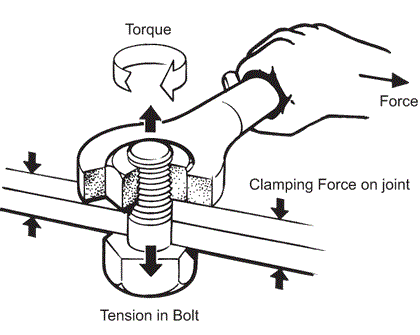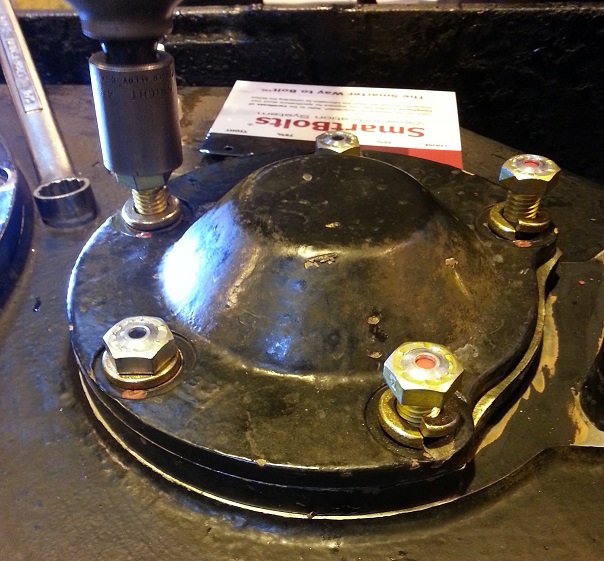Why are engineers more likely to specify bolt tension for bolted joint security, rather than other methods, such as torque or turn of nut?
Tension is Fundamental to Achieve a Secure Bolted Joint
Engineers understand the importance of a safe and secure bolted joint. By measuring tension you can be sure that you are properly preloading the bolted joint so that it will be better able to support varying service loads. The compressive force holding these bolted joint members together is referred to as clamp force.
Tension correlates directly with clamp force. When a bolt is tightened, it is forced to stretch and behaves like a spring. Tension developed within an elongated bolt has an equal and opposite reaction on the bolted components.
Tension in the Bolt = Clamp Force in the Bolted Joint
The most accurate method of bolt tension measurement is based on fastener elongation. For this reason, when installing fasteners, engineers prefer to rely on tension measurements to achieve proper clamp force. If consistent tension is available, competing methods – such as torque – are unnecessary and often misleading.

Tension Measurements are More Reliable
Why is bolt tension measurement so important? The answer is bolted joint reliability. If a bolt is installed correctly, the likelihood of experiencing bolted joint problems over time is significantly reduced. Therefore, by ensuring proper tension during installation the end user can expect reduced occurrences of failures.
Tension Measurements Leads to Clean Data
Tension is an engineer’s ideal measurement for bolted joint security. So it makes sense that engineers are specifying tension when practical on engineering drawings. With SmartBolts, it is more practical than ever to do this.
The use of tension also makes the sharing of data more efficient. Clamp force requirements are universally true for the specific bolted joint design regardless of environmental factors. How’s that for simplicity?
Tension Allows Engineers to Check Clamp Force Levels Beyond Initial Installation
Tension is a property that should always be present in a secure bolted joint. The ability to measure tension at all times enables you to inspect for this security – a strong advantage in combating common issues like bolted joint relaxation and embedment.

